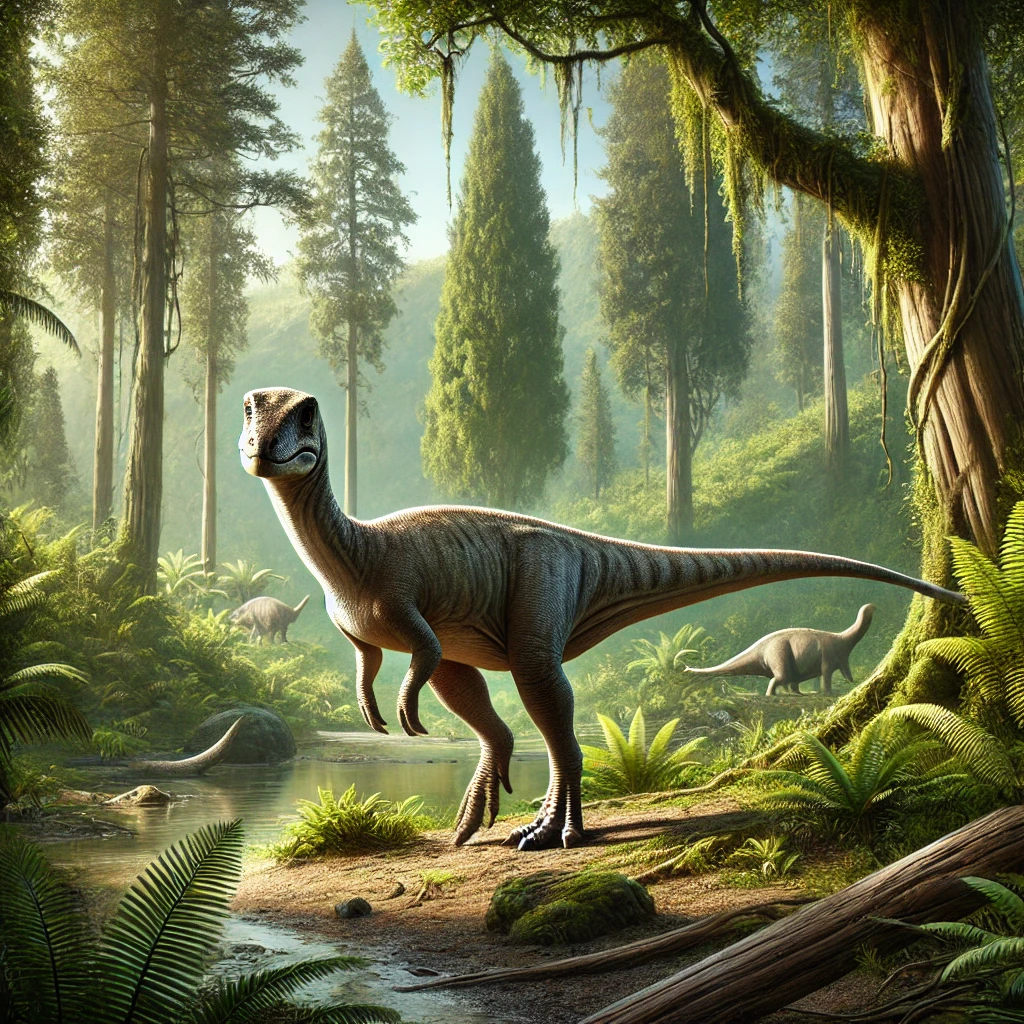Fabrosaurus
Pronunciation:
Fab-roh-sore-us
Name Meaning:
“Fabre’s lizard” (named after Jean Henri Fabre, a famous French naturalist)
Dinosaur Classification:
- Kingdom: Animalia
- Phylum: Chordata
- Class: Reptilia
- Order: Ornithischia
- Suborder: Ornithopoda
- Family: Fabrosauridae
- Genus: Fabrosaurus
- Species: F. australis
Dinosaur Description:
Fabrosaurus is a small, herbivorous dinosaur that lived during the Early Jurassic period. As one of the earliest known ornithischians, it has a significant place in the evolutionary history of dinosaurs. This lightweight dinosaur measured approximately 1 meter (3.3 feet) in length and had a build similar to later, more advanced ornithopods like Hypsilophodon. Fabrosaurus is characterized by its slender body, long legs, and small, triangular skull with beak-like jaws. These jaws were equipped with small, leaf-shaped teeth, ideal for a plant-based diet.
Fabrosaurus likely moved on two legs (bipedal), with its long, strong hind legs allowing it to run quickly, probably to escape predators. Its forelimbs were much shorter, and it is presumed that Fabrosaurus used them for grasping or foraging. Its long tail would have provided balance as it moved, helping the dinosaur maintain speed and agility.
As one of the earliest members of the ornithischian order, Fabrosaurus gives paleontologists valuable insight into the early adaptations and features that would later become more developed in its descendants. It is considered a basal ornithischian, meaning that it retains many primitive characteristics of the group, while also showing traits that would evolve further in later species.
Fossil remains of Fabrosaurus have been sparse, making complete reconstructions difficult, but what has been discovered points to a small, fast herbivore that relied on its speed to evade larger predators of the time. Its small size and lightweight frame made it an effective survivor in the early Jurassic ecosystems.
Dinosaur Diet and Behavior:
Fabrosaurus was a herbivore, likely feeding on low-lying plants, ferns, and other vegetation available during the Early Jurassic period. Its small, leaf-shaped teeth suggest that it was well-suited to a diet of soft plants. Its bipedal stance, quick movements, and lightweight frame indicate that Fabrosaurus might have been a fast runner, likely using speed as its primary defense mechanism against predators.
Dinosaur Size:
Fabrosaurus measured around 1 meter (3.3 feet) in length, making it a small dinosaur in comparison to many other species.
Dinosaur Weight:
Fabrosaurus is estimated to have weighed around 10 kilograms (22 lbs), reflecting its lightweight and agile nature.
Fossil Discoveries:
The first fossils of Fabrosaurus were discovered in southern Africa, specifically in Lesotho. These remains were fragmentary but provided enough information to describe this early dinosaur. The fossils found primarily consisted of partial skull bones and fragments of limbs, giving paleontologists enough data to classify it as an early ornithischian dinosaur.
What Period Did The Dinosaur Live:
Fabrosaurus lived during the Early Jurassic period, approximately 200 to 190 million years ago.
Notable Facts or Trivia:
– Fabrosaurus is named after Jean Henri Fabre, a French naturalist, although there is no direct connection between the scientist and the dinosaur.
– It was one of the earliest known ornithischian dinosaurs, playing a crucial role in understanding the evolution of plant-eating dinosaurs.
– Fabrosaurus is often regarded as a “basal” or primitive ornithischian, highlighting its place at the dawn of a major dinosaur lineage.
Scientific Significance:
Fabrosaurus holds significant scientific value due to its place as one of the earliest known members of the Ornithischia. Studying its fossils has helped paleontologists better understand the early diversification of dinosaurs, especially the evolution of herbivorous species. As a basal ornithischian, Fabrosaurus showcases traits that would evolve and diversify in later dinosaur species, providing key evidence about early dinosaur morphology and behavior.
Extinction & Legacy:
Fabrosaurus, like many dinosaurs of the Early Jurassic period, went extinct before the end of the Jurassic era. Its legacy, however, lives on through its contribution to the understanding of early ornithischian evolution. Although Fabrosaurus fossils are rare, the information gleaned from them has been instrumental in piecing together the evolutionary history of one of the major groups of dinosaurs.
